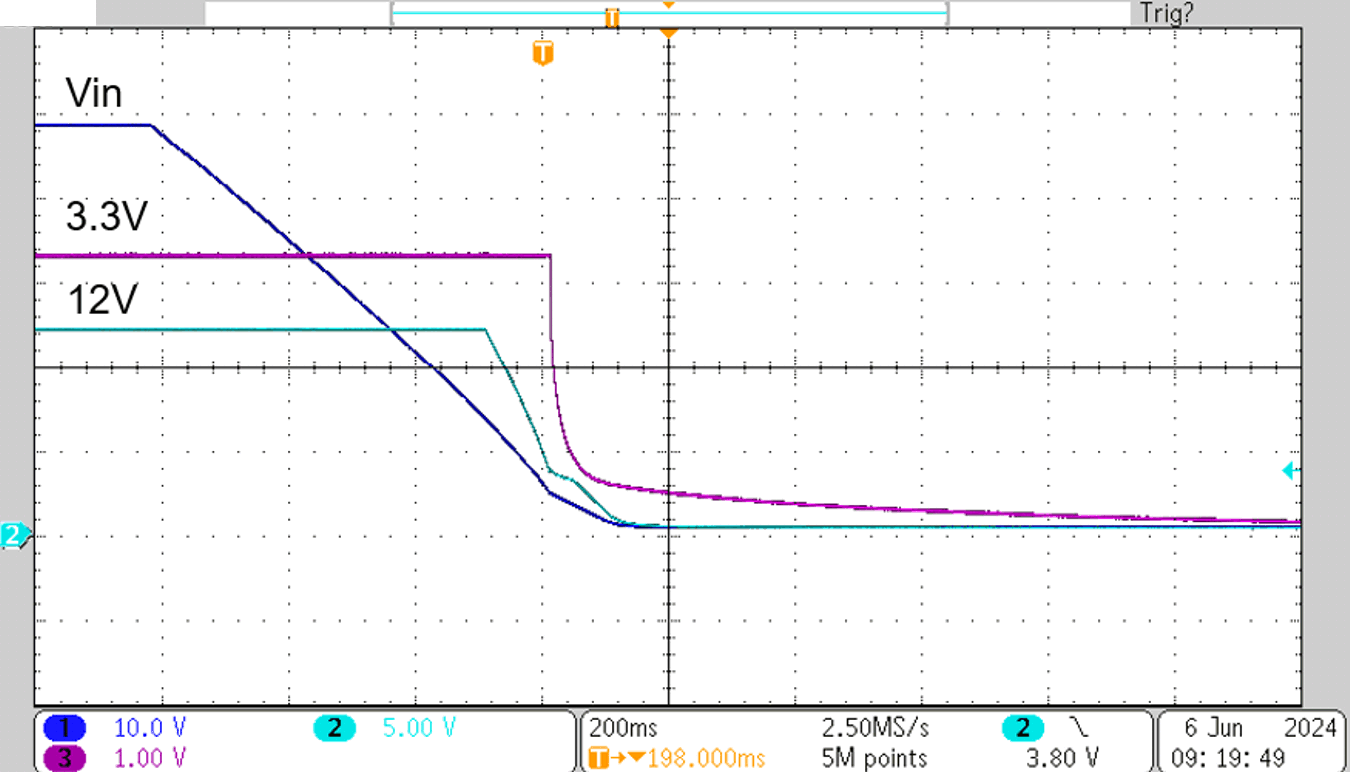TIDUF82A August 2024 – November 2024 DRV8162 , INA241A , ISOM8710
- 1
- Description
- Resources
- Features
- Applications
- 6
- 1System Description
-
2System Overview
- 2.1 Block Diagram
- 2.2 Design Considerations
- 2.3 Highlighted Products
- 3Hardware, Software Test Requirements and Test Results
- 4Design and Documentation Support
- 5About the Authors
- 6Revision History
3.3.1.2 Power Down
During the power-down process, the VIN ramp down is also slow because the VIN has to discharge the > 700µF capacitance (see Figure 3-5).
As the VIN drops to approximately 7V, the 12V rail starts to power down. When this 12V rail gets to approximately 4V, the VIN shuts down the 3.3V rail. Then the remaining charge of the capacitors dissipates slowly.
 Figure 3-5 TIDA-010956 Power-Down
Sequence
Figure 3-5 TIDA-010956 Power-Down
SequenceTable 3-7 shows the system status when the current is a 12V rail.
Table 3-7 12V Rail Current in Various
System Status
| MEASUREMENT | SYSTEM STATUS | 12V RAIL CURRENT |
|---|---|---|
| Current (mA) | Idle (Gate driver disabled) | 73.5 |
| Current (mA) | 16kHz PWM | 125.4 |
Note: By default, in this design the C2000 LaunchPad is
supposed to be powered up by the TIDA-010956 with the 3.3V supply through a 0Ω
resistor (R29). Remove the JP1 (5V power supply from the PC USB) on the
LAUNCHXL-F280039C before applying VIN.